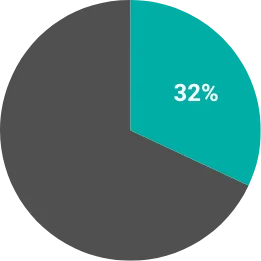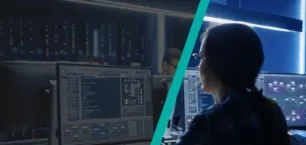Container Support Architected for
Embedded. Built on Standards.
Wind River is the industry leader in delivering RTOS support for containers, suitable for the most demanding embedded systems and conforming to the OCI open standard.
Wind River has delivered support for containers in embedded systems for more than five years.
Wind River® developed and contributed the open source code that brought containers to Wind River Linux. We implemented container support for VxWorks®, first with VxPOD in 2016 and more recently with OCI-compliant containers. Our vision for containers in embedded is enhanced by our experience founding and supporting the Kubernetes, container-based StarlingX project for telecommunications.
Containers: The Key to Embedded Application Management
The main functions of embedded containers are to wrap up applications and services with all their dependencies and to isolate multiple software components running on the same hardware. People are most familiar with containers as part of cloud-native architectures in which applications are decoupled from the infrastructure — including hardware and operating systems — on which they are running. With this approach, you can automate the software pipeline to remove manual errors, standardize tools, and accelerate the rate of product iterations.
Find out more about embedded containers and how Wind River is bridging embedded and cloud-native technologies.
Get in Touch »
Although containers are new to embedded, 32% of embedded development leaders already believe that they are key to managing any application.
- Wind River

By 2028, more than 95% of global organizations will be running containerized applications in production, which is a significant increase from fewer than 50% in 2023.
- Gartner

45% of global security tech leaders say their company has sufficient security policies and tools in place for use of containers.
- Forrester

Containers and the Software- Defined Vehicle
Container adoption enables three critical, transformative changes for the automotive industry: modularization of code resulting in a more manageable and readily updatable platform; efficiency gains that reduce cost during development, deployment, and operations; and monetization of new and enhanced services through the lifecycle of the software-defined vehicle.
If you’re interested in bringing support for containers to your next-generation automotive platform, contact us to find out how Wind River can help.
Contact Us »“Defining the containers — or refactoring the existing code into containers — requires a robust product roadmap that details and defines the required containers and interfaces. This is the up-front investment required to stand up a containerized software platform — but it is the investment that enables future productivity gains.”
— Glen DeVos, Senior Vice President, Aptiv
Read the Interview »Containers Drive A&D Innovation
For aerospace and defense companies looking to optimize space, weight, and power (SWaP), containerization is transformative. By running secure, isolated containers on single or distributed systems, they can consolidate applications into fewer systems, improving scalability, simplifying deployment, and enhancing system update capabilities.
If you want to explore how containerization can help you accomplish your program’s SWaP goals, contact us to see how Wind River can help.
Contact Us »“Pretty much every organization that’s trying to keep up with the pace of events and the demanding constraints that come with being a secure organization and really keep up with cybersecurity, I think has no choice but to embrace DevSecOps, which in turn embraces Kubernetes and containerization.”
— Nicolas Chaillan, former Chief Software Officer, U.S. Air Force and Space Force
Read the Interview »
Why VxWorks for Containers?
VxWorks is the first and only RTOS to support OCI containers. OCI compliance gives developers confidence that containers they build will function reliably across infrastructures that are developed according to the OCI standard. OCI-compliant tools — following both the image format specification and runtime specification — effectively span the ecosystem composed of container platforms and container engines, as well as standards-based cloud provider environments and on-premises infrastructures.
Why does OCI compliance matter?
To drive and unify advances in container technology, Docker, CoreOS, and other leaders in the container technology field established two specifications: a runtime specification and an image specification. The runtime specification covers the unpacking of the downloaded file system bundle — the OCI image. The file system bundle is unpacked into an OCI runtime file system bundle to be run by the OCI runtime. VxWorks adheres fully to these OCI specifications. Tools and sample code are available through the OCI and GitHub repositories.
Why Wind River Linux for Containers?
Initially developed at Wind River and available on GitHub, the container technology in Wind River Linux, dubbed OverC, integrates components from the Cloud Native Computing Foundation (CNCF) and the Yocto Project to help define a comprehensive framework for building and deploying containers for embedded systems. This technology supports virtually any processor architecture and orchestration environment, removing the difficulties and lowering the barrier of entry for container usage in embedded software projects for a diverse range of applications, including industrial control systems, autonomous vehicles, medical devices and equipment, IoT gateways, radio access network (RAN) products, and a wide range of network appliances.




